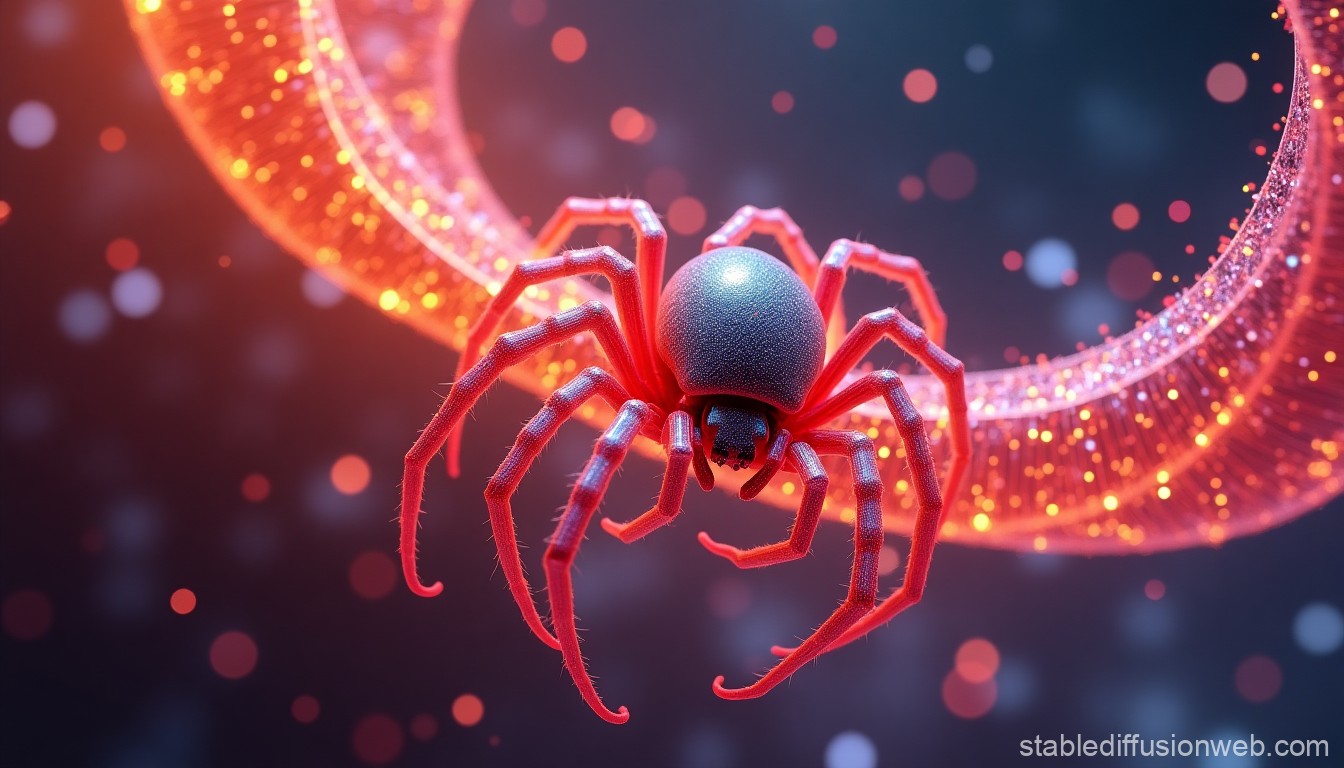
A two-man project to use spider silk is achieved after 4 years
A A rare textile made from the silk of more than a million wild spiders has been on display at the American Museum of Natural History in New York City. To produce this golden cloth, 70 people spent four years collecting golden orb spiders from telephone poles in Madagascar, while another dozen workers carefully extracted about 80 feet of silk filament from each of the arachnids. The resulting 11-foot by 4-foot textile is the only large piece of cloth made from natural spider silk existing in the world today.
B Spider silk is very elastic and strong compared with steel or Kevlar, said textile expert Silom Peers, who co-led the project. Kevlar is a lightweight synthetic fabric which is chemically related to nylon. It is very tough and durable and used in bullet-proof vest. Kevlar is also resistant to wear, tear, and heat and has absolutely no melting point. But the tensile strength of spider silk is even greater than Kevlar's aramid filaments, and greater than that of high-grade steel. Most importantly, spider silk is extremely lightweight: a strand of spider silk long enough to circle the Earth would weigh less than 500 grams (18 oz). Spider silk is also especially ductile, able to stretch up to 140 per cent of its length without breaking. It can hold its strength below-40c. This gives it a very high toughness, which equals that of commercial fibers.
C Researchers have long been intrigued by the unique properties of spider silk. Unfortunately, spider silk is extremely hard to mass produce. Unlike silk worms, which are easy to raise in captivity, spiders have a habit of chomping off each other's heads when housed together. According to Peers, there's scientific research going on all over the world right now trying to replicate the tensile properties of spider silk a apply it to all sorts of areas in medicine and industry, but no one up until now has succeeded in replicating 100 per cent of the properties of natural spider silk.
D Peers came up with the idea of weaving spider silk after learning about the French missionary Jacob Paul Camboue, who worked with spiders in Madagascar during the 1880s and 1890s. Camboue built a small, hand-driven machine to extract silk from up to 24 spiders at once, without harming them. The spiders were temporarily restrainer their silk extracted, and then let go. Peers managed to build a replica of this 24-spider silking machine that was used at the turn of the century, said Nicholas Godley, who co-led the project with Peers. As an experiment, the pair collected an initial batch of about 20 spiders. When we stuck them in the machine and started turning it, lo and behold, this beautiful gold-colored silk started coming out', Godley said.
E But to make a textile of any significant size, the silk experts had to drastically scale up their plan. Fourteen thousand spiders yield about an ounce of silk, Godley said, and the textile weighs about 2.6 pounds. The numbers are overwhelming. To get as much silk as they needed, Godley and Peers began hiring dozens of spider handlers to collect wild arachnids and carefully harness them to the silk-extraction machine. We had to find people who were willing to work with spiders, Godley said, because they bite.' By the end of the project, Godley and Peers extracted silk from more than 1 million female golden orb spiders, which are abundant throughout Madagascar and known for the rich golden color of their silk, Because the spiders only produce silk during the rainy season, workers collected all the spiders between October and June. Then an additional 12 people used hand-powered machines to extract the silk and where it into 96-filament thread. Once the spiders had been silked, they were released back into the wild, where Godley said it takes them about a week to regenerate their skill. We can go back and re-silk the same spiders, he said. It's like the gift that never stops giving.
F Of course, spending four years to produce a single textile of spider silk isn't very practical for scientists trying to study the properties of spider silk, or companies that want to manufacture the fabric for the use as a biomedical product, or an alternative to Kevlar armor. Several groups have tried inserting spider genes into bacteria or even cows and goats to produce silk, but so far, the attempts have been only moderately successful. Part of the reason it's so hard to generate spider silk in the lab is that it starts out as a liquid protein that's produced by a special gland in the spider's abdomen. Using their spinneret, spiders apply force to rearrange the protein's molecular structure and transform it into solid silk. When we talk about a spider spinning silk, we're talking about how the spider applies forces to produce a transformation from liquid to solid, said spider silk expert Todd Blackledge of the University of Akron, Ohio, US, who was not involved in creating the textile. Scientists simply can't replicate the efficiency with which a spider produces silk. Every year we're getting closer and closer to being able to mass-produce it, but we're not there yet. For now, it seems we'll have to be content with one incredibly beautiful cloth, graciously provided by more than a million spiders.